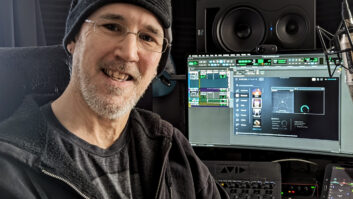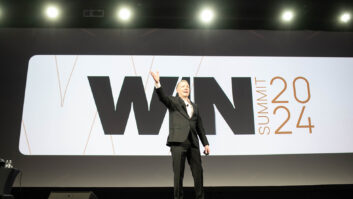New York – It’s clear the 3DTV industry still has a lot to learn about production
technique as a group of executives shared their real world experiences in a
panel discussion moderated by TV
Technology Editor Tom Butts at the “3DTV 2011 – What’s Next?” event
hosted by Broadcasting & Cable,
Multichannel News, TV Technology, TWICE, DV and Videography, Thursday afternoon in New
York.
Jerry Passaro, SVP, network operations and distribution, MSG
Network, who has produced 3D hockey games at Madison Square Garden, said he’s
learned the key is staying low with camera shots, cutting slow and minimizing
the use of graphics.
For Mark Rodin, executive director, Seminole
Productions at Florida State University, it’s taking advantage of new
technology, like the Panasonic camera, which has had a huge impact on his
filming of collegiate games. Because of its auto-alignment feature, he now has
40 minutes of highlights per game instead of five. “Things I thought would not
be comfortable from a theory standpoint are now very comfortable with that
camera,” he said.
Most of the panelists’ 3D production experience was in
sporting events, as that type of programming has been an early adopter to 3D
technology. “When done correctly, 3D literally takes you to the game,” said Jack
Kestenbaum, director of technical operations, YES Network, who shot the
Yankees-Mariners game in 3D this summer. “It’s said HDTV is a window into the
game, 3D places you in the chair.”
Although sports is not the only
programming that can be enjoyed in 3D, pointed out Joe Signorino, senior project
engineer, NEP Broacast, who has produced 3D music shows for DirecTV,”It’s often
easier to accomplish good 3D in those environments than in big sports venues,”
he said.
And those obstacles of producing in those environments are
sometimes significant. “To make it cost efficient is very difficult, said
Kestenbaum. “At most venues, the infrastructure is not conducive to this. So
return on investment very difficult at that point.”
Because 3D cameras
have to be placed lower in a venue, the equipment ends up killing seats that
could otherwise be sold (very expensively). Passaro says devices have to get
smaller and more robotics need to be introduced, which will be the linchpin to
sustained success. “It has to become a business for the networks,” he said.













